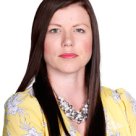It’s one of the most unselfish gifts that you could ever give and the opportunity only presents itself in death.

By donating your body to medicine and/or science, you have the ability to help train future generations of health-related professionals once you’re gone, serving, as some would call, a “silent teacher” to those wanting to learn.
READ MORE: Children’s Hospital of Saskatchewan maternal care: what to expect come 2019
“This is a priceless gift given to us to use as a tool to learn and become a competent physician, dentist or physical therapist,” Dr. Adel Mohamed, department head of anatomy and cell biology at the University of Saskatchewan (U of S), said.
A gift today, for a better tomorrow. Students learn about anatomy and how to cope with death by working with the donor known as their “first patient.”
“How much they learn is beyond the imagination,” Mohamed added.
Two older labs in the Health Sciences building at the U of S have now been replaced with state-of-the-art ones to conduct the work in.

Get daily National news
“One serves the active working station which is active dissection and that is usually the medical and dental students working in that lab.”
READ MORE: Registered nurses sound alarm regarding Saskatchewan patients being put at risk
The other lab is used by students in other health-related professions including physical therapy and kinesiology.
Administered by Mohamed’s department in the College of Medicine, the Body Bequeathal program has been in operation since 1935 – last year alone it helped 500 to 600 students with their education.
“Usually in a given year we have 40 to 50 bodies, 40 to 50 donors in our lab.”
All donors were from Saskatchewan and a donor must be the age of majority to provide bequeathal.
According to Mohamed, all donations must be received with 24 hours of a person’s death.
A severe infection that would pose a risk to the students would be one of the very few reasons why a healthy donor would ever be declined.
“Once we receive the donors, we process the body, we prepare it for the act of learning – a process which we call the dissection,” Mohamed said.
“The day from receiving the body until we finish usually takes two years.”
READ MORE: Saskatoon mother creates bucket list after terminal cancer diagnosis
Their cremated remains would then be returned to their family and a service held in their honour, a memorial ceremony organized by students who have benefited from the program with the understanding their medical education would be incomplete without donors.
Although the gift of life is pretty precious, death can be too.
For the privilege of using your body for training, upon acceptance, the department then makes and pays for all funeral arrangements.
Any necessary legal forms to participate can be obtained from the college through the department of anatomy and cell biology.
A donor card would then be issued to an individual to carry around in their wallet. A discussion between the potential participant and their next of kin must also take place and a copy of the completed form given to the family member.





Comments